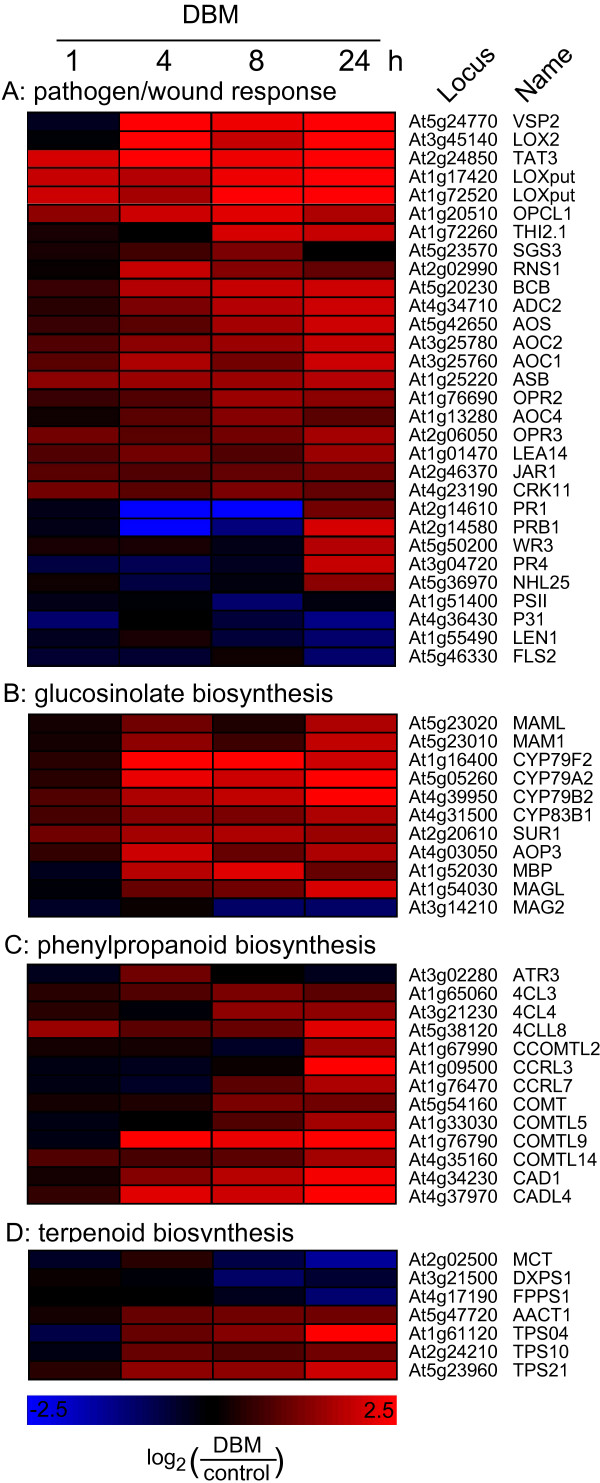Figure 3.
Expression profiles of defence related genes and genes of secondary metabolism upon herbivory. (A) A list of curator annotated genes involved in response to pathogens or wounding was retrieved from TAIR [18] Thirty of these genes were differentially expressed in response to DBM feeding in at least one time point and mean expression ratios for these genes were used to generate the heatmap. Bright red indicates a more than 5.7-fold higher level of transcript abundance (expression) in herbivore treated plants compared to control plants; bright blue indicates a more than 5.7-fold lower expression. (B) 22 Arabidopsis genes have been characterized as being involved in glucosinolate biosynthesis [32] and eleven of those were found differentially expressed in at least one time point upon DBM herbivory. These genes were used to generate the heatmap shown here. C) Of 78 genes encoding enzymes of the phenylpropanoid pathway and homologs thereof [9], thirteen were found differentially expressed as shown. Note that only CAD1, 4CL3, and 4CL4 are characterized enzymes while all other represent homologs of known phenylpropanoid genes. (D) Of 229 genes annotated to be involved in Arabidopsis isoprenoid metabolism [11], 30 genes (13%) were differentially expressed upon DBM feeding. Shown as a heatmap are selected genes involved in mono-, sesqui,- or diterpene biosynthesis. For details on expression data and gene name abbreviations search Additional File 1 using the locus identifier provided.

